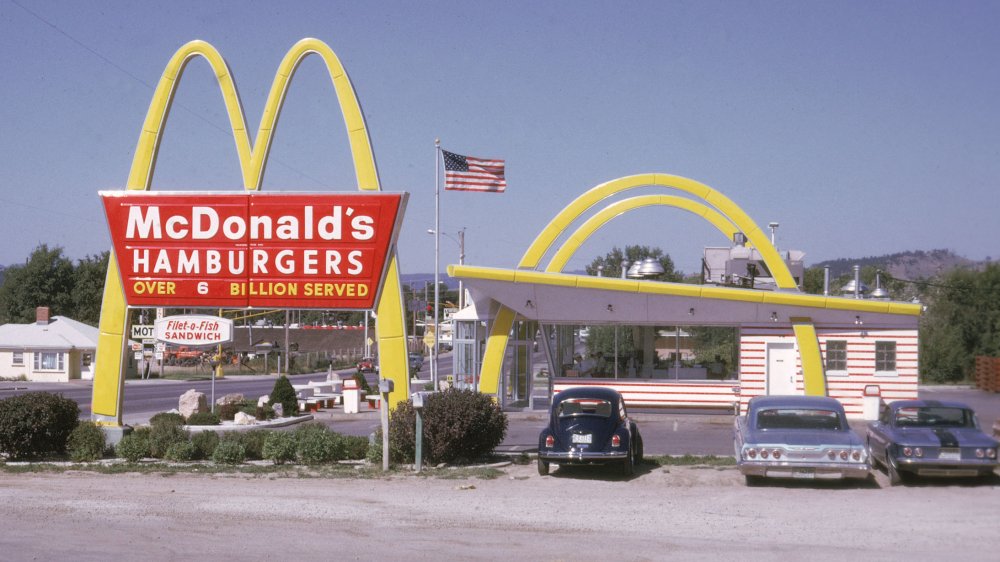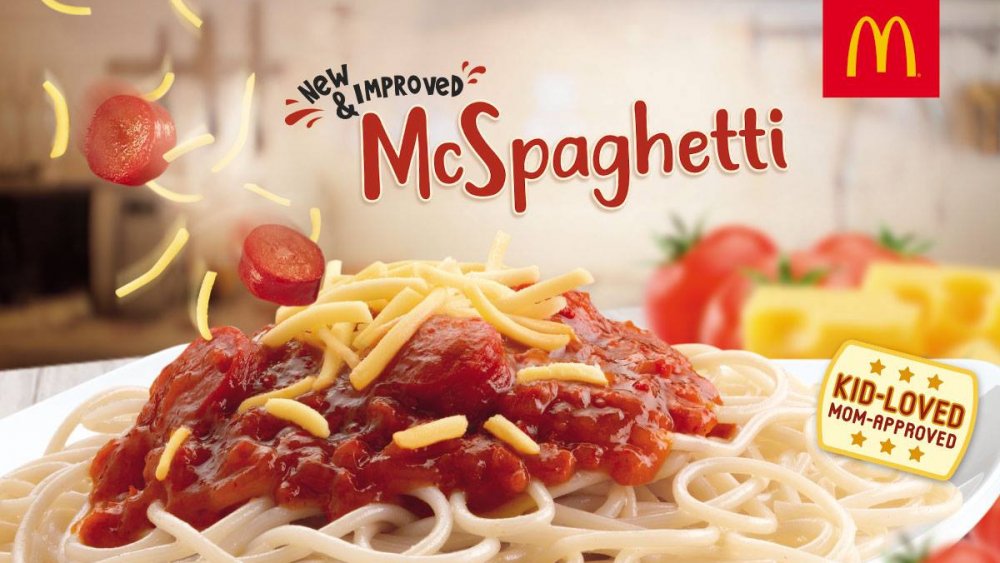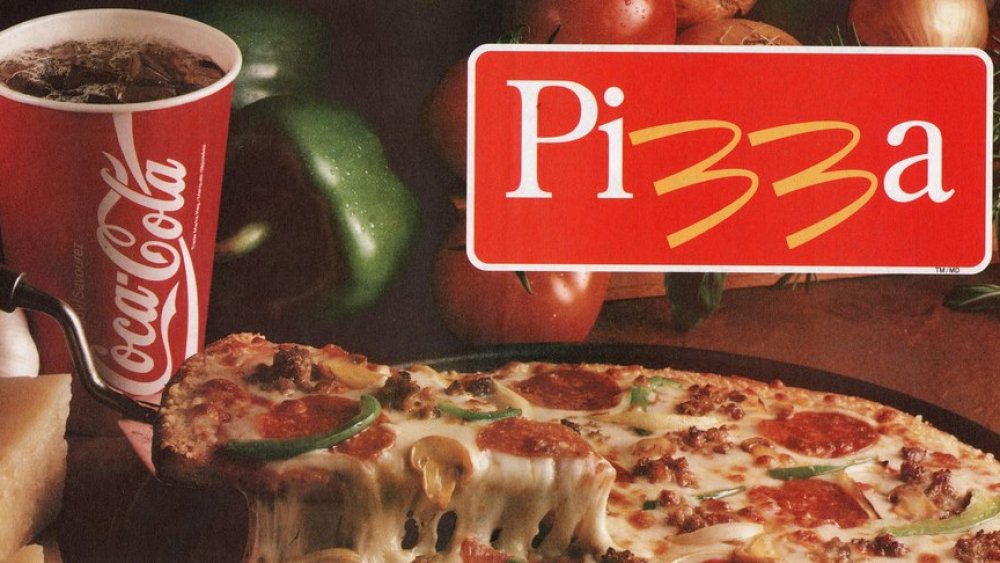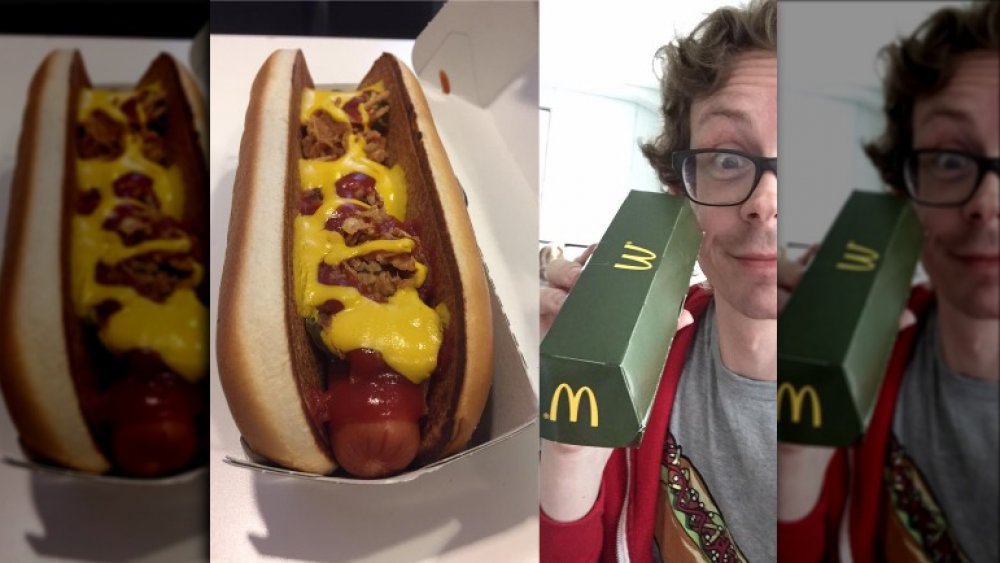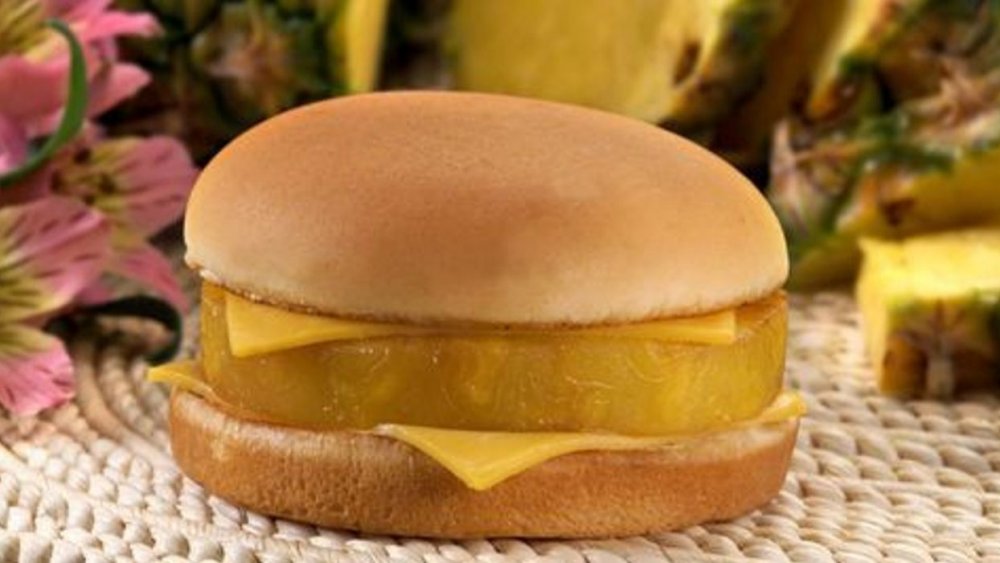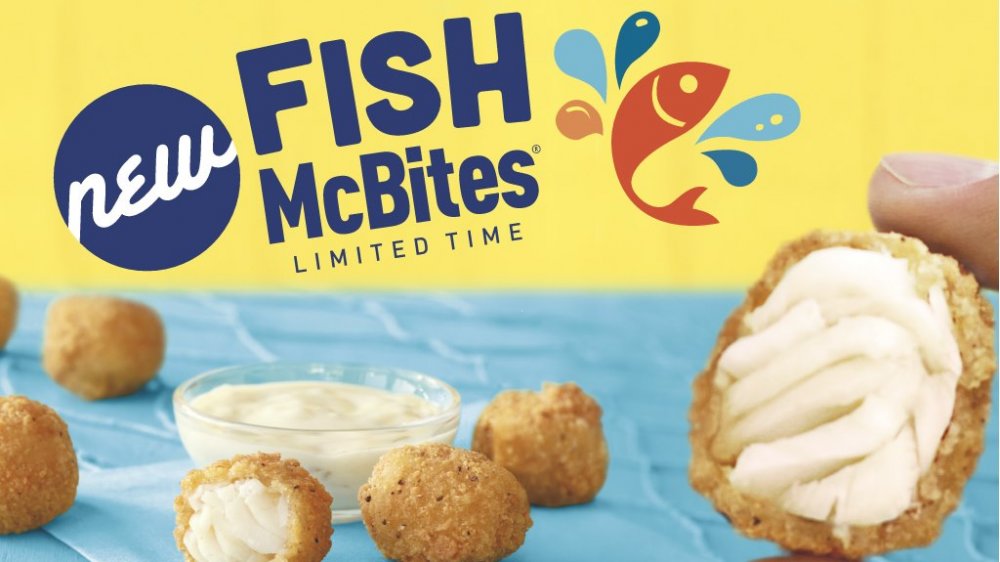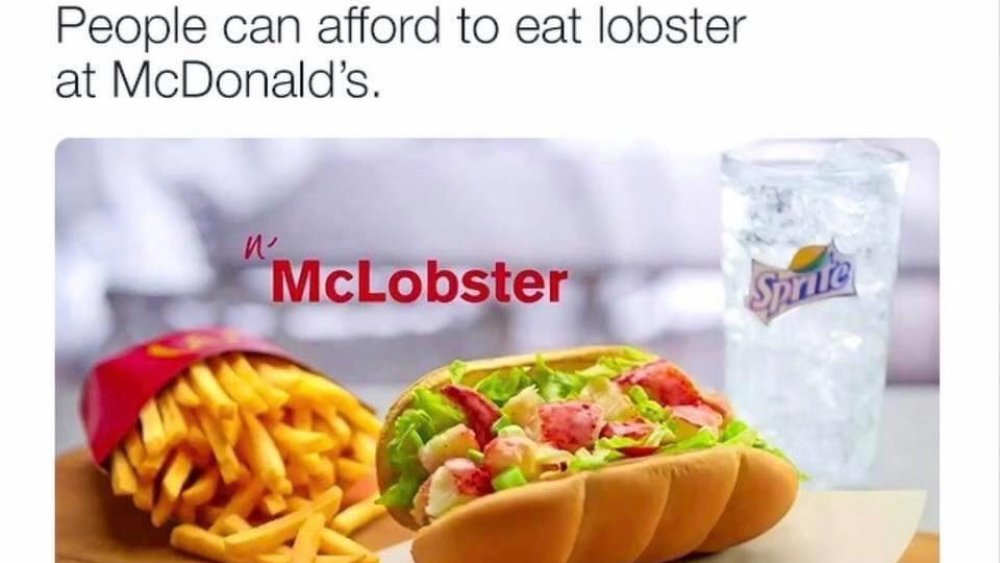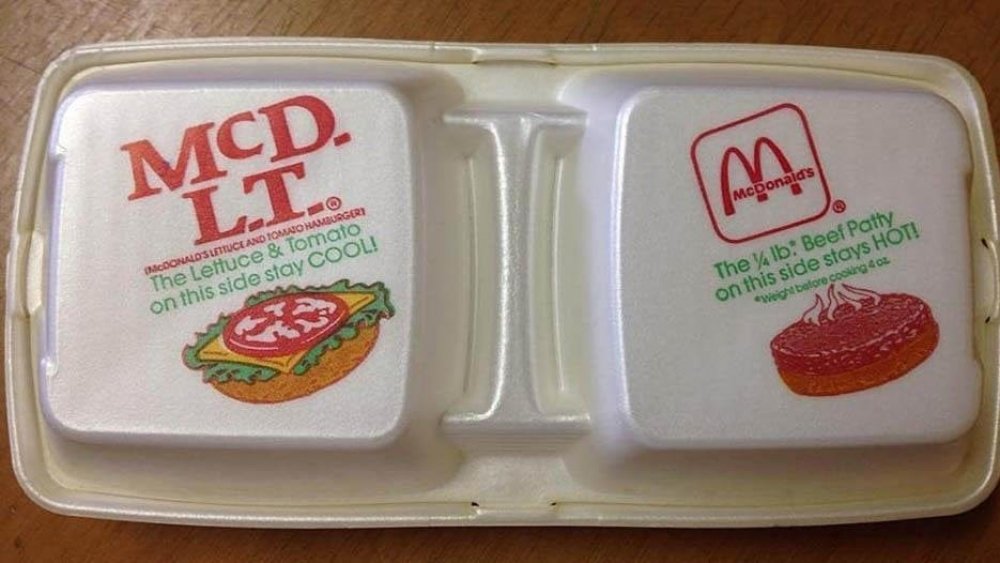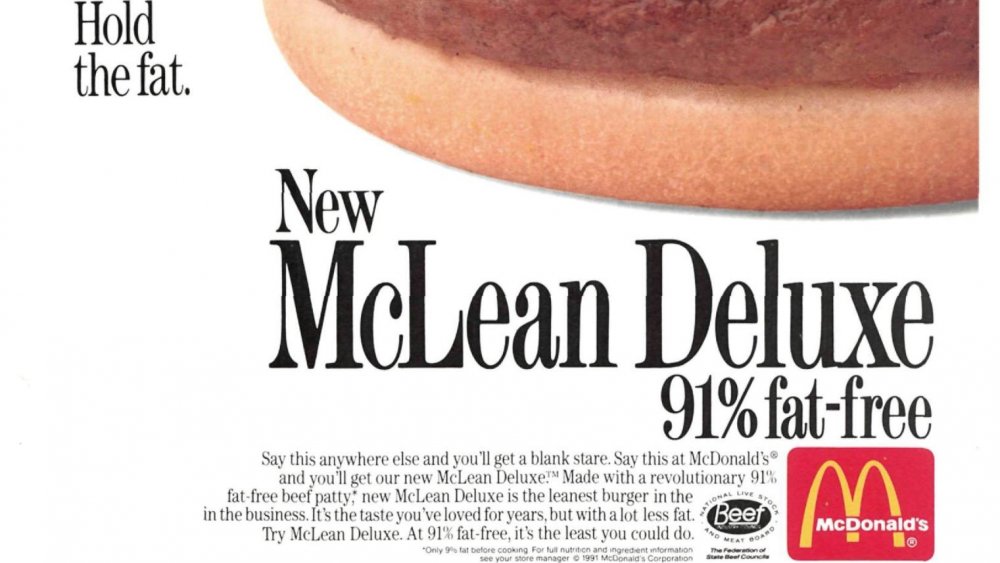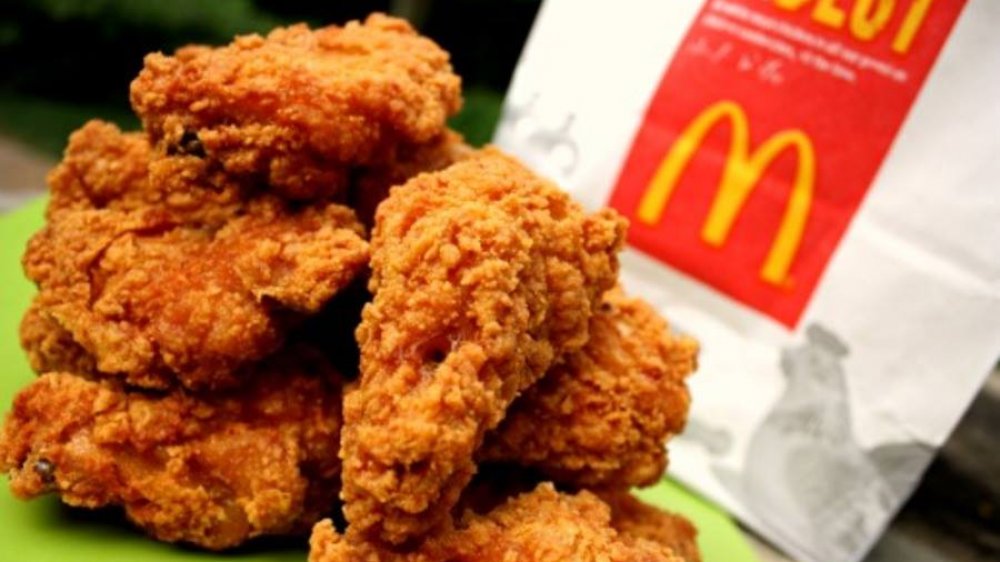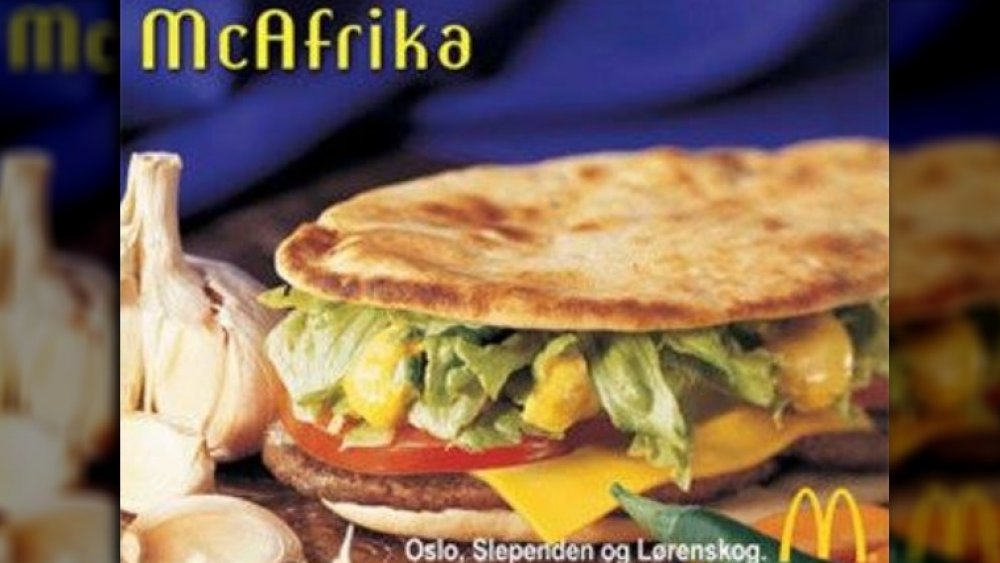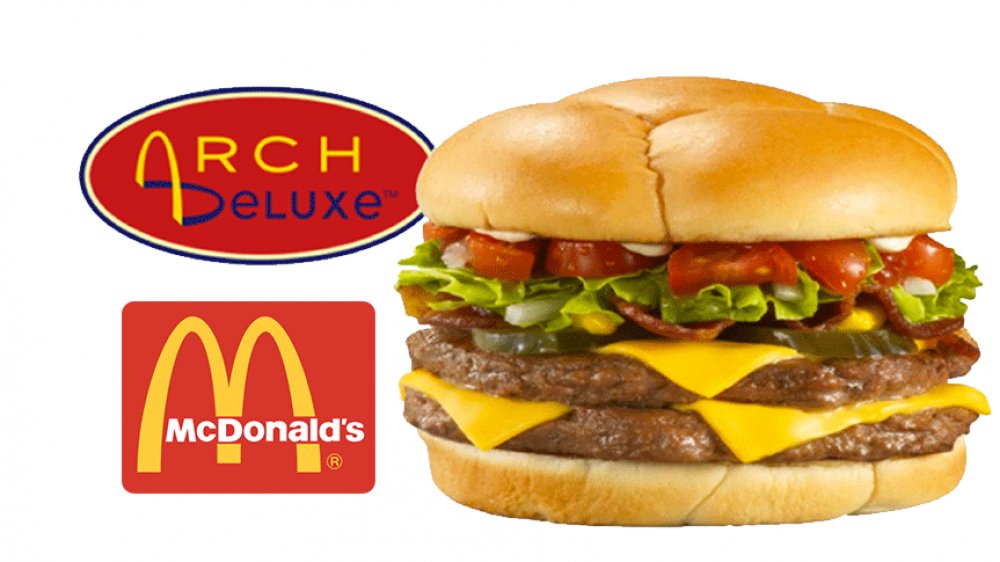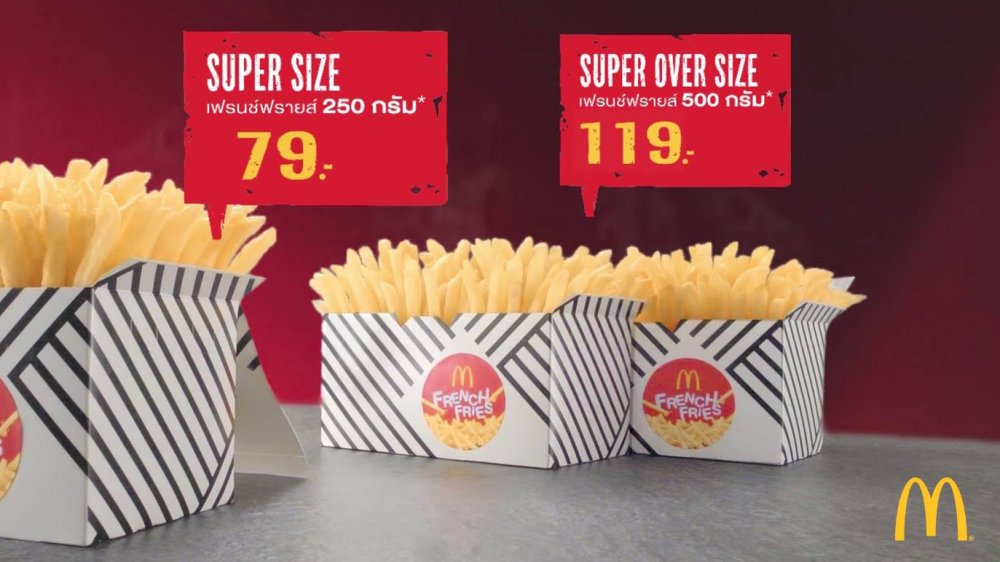The Biggest Flops In McDonald's History
In the era of start-ups, "failure breeds success" has become somewhat of a cliché mantra. And yet, if you also buy into the well-worn saying that there's a grain of truth in every cliché, then McDonald's must owe at least some of its supersized success to its epic failures. Because for every Big Mac and Filet-O-Fish, there have also been the more head-scratching and even humiliating likes of the Hula Burger and the McLean Deluxe (known in insider circles as the "McFlopper").
One can chalk up many McDonald's failures to flawed, unappealing, or simply ridiculous products. But there were also promising items that fizzled out due to botched packaging, pricing, and/or public relations.
Viewed in hindsight, many of McDonald's most spectacular flops seem deliriously wrongheaded. And yet, as food historian Andrew Smith, author of the Encyclopedia of Junk Food and Fast Food told The Christian Science Monitor, even these massive misses ended up being great successes due to the considerable news and social media they generated. Indeed, the mere fact of McDonald's retiring a misfire from its menus gives people something to read, talk, (and write) about. And so, in the spirit of keeping the conversation going, we're serving up the biggest flops in McDonald's history.
McDonald's McSpaghetti
Way back in the late 1970's, when America's fast food industry was still young and relatively innocent, McDonald's decided to up its cachet by offering some continental swagger to its humble homegrown burgers and fries. Banking on the fact that everybody and their mamas loved pasta, McDonald's launched a spaghetti and meatballs meal with the proprietary if somewhat obvious name, McSpaghetti, in the 1980s.
Despite near universal love for spaghetti, the near universal availability of the staple made it difficult to convince customers of why they should be ordering Italian pasta with tomato sauce at a burger joint. As Medium savily argues, anyone can make (or microwave) spaghetti at home, but they can't reproduce Big Macs and McDonald's fries.
McDonald's learned this lesson fairly quickly and McSpaghetti was discontinued when it was still in its al dente phase. If you feel you somehow missed out on not tasting this historic flop, know that tomato-sauce doused McSpaghetti lives on at McDonald's in the Philippines. Considerably closer to home, the largest McDonald's restaurant in the world, in Orlando, Florida, also offers McSpaghetti and other McPasta dishes such as lasagna and fettuccine Alfredo to curious customers.
McDonald's McPizza
You'd think McDonald's would have learned its lesson after being burned by its foray into pasta. However, not long after the demise of McSpaghetti, in 1989, it bet on Italy once again when it rolled out McPizza. At the time, McDonald's was trying to bolster its lackluster dinner-time business. With pizza sales growing at a rate of 10 percent a year, McDonald's decided to take on reigning champ, Pizza Hut, inciting what The New York Times dubbed the "Pizza Wars."
As it prepared to do battle, McDonald's invested heavily in pizza artillery. Efforts ranged from remodeling kitchens with special pizza ovens and warming bins to expanding drive-through windows to widths compatible with pizza boxes. The company even created a patented oven that used superheated air to bake a crispy-crusted pizza in five-and-a-half minutes flat. In response, Pizza Hut promptly started airing prime-time TV ads that mocked McDonald's pizza dough as "McFrozen."
Despite its valiant efforts and sophisticated technology, McDonald's was waging a losing battle. It took 11 minutes to make the made-to-order, slow-baking pies. This was a small eternity for a restaurant whose entire philosophy revolved around fast frying and speedy service. Even though it scaled down the family-sized pizzas — served at tables just like a fancy restaurant! — to more fast-food friendly individual pies, McPizzas struggled to survive and didn't last long in most locations. In 2017, the last two McPizza-selling outposts — in Pomeroy, Ohio and Spencer, West Virginia — removed them from their menus, thus ending McDonald's engagement in the pizza wars.
McDonald's McHotDog
Sometimes Daddy really does know best. In 1977, Ray Kroc, founding father of the fast-food industry and the McDonald's empire, published his autobiography, Grinding It Out, The Making of McDonald's. In his memoir, Kroc went on the record as to why the Golden Arches should never sell America's other iconic backyard BBQ stalwart: the hot dog. "There's no telling what's inside a hot dog's skin," he wrote. "And our standard of quality just wouldn't permit that kind of item."
Unfortunately not everyone read Kroc's book. A decade after his death in 1984, some heedless corporate heirs decided to (foolishly) go against his wishes. In the summer of 1995, McDonald's introduced its first-ever McHotDog — to little acclaim. Despite lackluster sales, the chain stubbornly persisted, offering McHotDogs off-and-on, in a number of markets and locations throughout the years, only to finally discontinue them due to an unwavering lack of enthusiasm.
Setting aside Ray Kroc's misgivings about the unfathomable innards of wieners, it's a bit surprising that hot dogs, usually so compatible with burgers, fries, and soft drinks, proved to be such a flop. Medium's Nick Davies plausibly argues that it all comes down to aesthetics. Quite simply: a sizzling, char-grilled burger topped by a zesty bright pop of orange cheese is far more visually appetizing than a pallid, putty-colored hot dog laying dormant in an oblong, doughy bun.
McDonald's Hula Burger
Considered one of the most successful entrepreneurs of the 20th century, Ray Kroc wasn't infallible. In the early 1960s, McDonald's franchisees in certain markets were taking a financial hit due to Catholics' abstaining from eating meat on Fridays. One franchisee, Lou Groen, owned a McDonald's in Cincinnati, whose population at the time was 87 percent Catholic. Groen's solution to "losing his shirt" every Friday was an unsinful burger alternative: a battered halibut and cheese sandwich.
According to the Cincinnati Business Courier, when Groen took his idea to Kroc, the latter hated it, declaring: "I don't want my stores stunk up with the smell of fish." Part of his reaction may have been due to Kroc having dreamed up his own non-meat alternative: the Hula Burger. The vegetarian sandwich featured a slice of grilled pineapple with two slices of cheese on a toasted bun.
In the spirit of competition, Kroc challenged Groen to a culinary duel. On Good Friday, 1962, both sandwiches would be sold side-by-side at select locations, with the winner being added to the McDonald's menu. At the end of the day, the results were irrefutable: Hula Burger: 6, Filet-O-Fish: 350.
While Filet-O-Fish went on to become a nationwide best-seller, it was "Aloha!" time for the Hula Burger. In his autobiography, Grinding It Out, Kroc admitted that the burger was "a giant flop when we tried it in our stores. One customer said, 'I like the hula, but where's the burger?'"
McDonald's McFish Bites
The Filet-O-Fish was such a winner for McDonald's that, in 2013, when the burger behemoth suffered its first sales decline in over a decade, it decided to take drastic measures. As CBS reports, after axing the president of McDonald's U.S., the company proceeded to roll out the closest thing imaginable to the original sandwich in the form of McFish Bites. By then, the Filet-O-Fish's original haddock had been swapped out for cheaper Alaskan pollock. Shaped into snack-friendly nuggets, McFish Bites were breaded, deep-fried, and served with a tangy tartar dipping sauce.
At the time, McDonald's was getting a lot of flack from health advocacy groups who accused the chain of encouraging kids to eat junk food. In response, McDonald's added McFish bites to its Happy Meals, while reducing the fries and adding apple slices. The chain also sought to seduce adults by offering three sizes of packaging, the better with which to share the nuggets or eat them on the go (Brian Irwin, director of marketing for McDonald's U.S., proudly pointed out that a carton of McFish Bites fit snugly in most car's cup holders).
Yet, despite all the ongoing love for Filet-O-Fish, the relative health benefits of deep fried pollack, and the many bite-sized advantages that Irwin claimed made the snack so "fun" and "poppable," customers just didn't take the bait. Introduced in February of 2013, McFish Bites were discontinued later that same year due to poor sales.
McDonald's McLobster
Aside from McFish Bites, McDonald's has witnessed the sinking of other maritime-inspired meals. According to The New Yorker, in 2013, a steep decline in the wholesale price of Maine lobster led the coveted crustacean to become a mass-market staple. After finding its way into Quizno's Lobster & Seafood Salad subs and Subway's Lobster Salad Sandwich, it washed up on McDonald's menus in the form of the McDonald's Lobster Roll.
The "McLobster" was actually the Golden Arches' second attempt at a lobster roll in more than a decade (the first aborted attempt occurred in 1992). This time, the economics seemed more favorable. According to The New Yorker, lower overall costs coupled with McDonald's ability to purchase cheaper C.K.L (claw, knuckle, and leg) meat in high volumes allowed the company to charge a relatively affordable $7.99 (depending on the location) for the usually high-end delicacy. Even so, a lot of customers weren't biting. As a Maine-based marine biologist told The New Yorker, "If I want a lobster roll, I could think of a dozen places between here and the nearest McDonald's where I'd get it."
The McLobster flop followed that of the McCrab sandwich with which McDonald's had tried to tempt crabcake-loving traditionalists in Maryland, Virginia, and Delaware. McDonald's crab cakes were actually handmade to ensure lumps of crab meat were visible. McCrab co-inventor Bernie Carr stressed that customers "want to see the crab meat." Yet, they didn't want to see the McCrab, which skulked away, never to return.
McDonald's McDLT
Although McDonald's is always on the prowl for the next, new McProduct, some McNovelties are less about substance and more about style. A case in point was the McDLT. By the time the 1980s rolled around, McDonald's was apparently receiving complaints about the swamp-like ecosystem that emerged after placing sog-prone vegetables onto an otherwise crispy burger and toasted bun. Its seemingly brilliant solution was to completely overhaul the burger biome by creating the McDLT.
A pioneering example of user-friendly, interactive food, the McDLT was a McDonald's burger with Lettuce and Tomato. If this combo seems suspiciously like the same old, know that it was completely deconstructed via a specially designed Styrofoam container with two compartments. One compartment contained the toasted bottom bun and grilled burger while the other held the top bun, cheese, toppings, and condiments. The idea was that you could assemble your own burger right before taking a bite out of it. In doing so, you'd preserve the textural integrity of both the hot, grilled components and the fresh, crispy ones.
Alas, the McDLT also featured some notable design flaws. Lumping the cheese in the "cool" compartment prevented it from melting deliciously on top of the burger. And even in the gas-guzzling Reagan years, all that nasty Styrofoam was already being seen as being environmentally unfriendly. Ultimately, not even Seinfeld star Jason Alexander singing the praises of "hot beefy McD... cool, crisp LT" could stave off rapid extinction.
McDonald's McLean Deluxe
Back in the early 1990s, Americans faced a seemingly unsolvable dilemma. As The New York Times wrote, at the same time their waistlines were expanding, so was their guilt about consuming fatty, fried foods. The guilt was profound enough to transform fat-free food from a mere fad into a permanent revolution.
Fast food chains were quick to jump on the low-fat bandwagon. McDonald's joined the cause by introducing a low-fat burger for people who wanted to lose weight and get their McDonald's fix too. As a slimmed-down version of the Big Mac, the McLean Deluxe was made from 91 percent lean ground beef. It also featured seaweed, or rather a seaweed extract known as carrageenan, commonly used as a stabilizer throughout the food industry.
McDonald's went all out in terms of advertising. In one commercial, Michael Jordan, at the peak of his powers, lent his image to "the official sandwich of the NBA". Another featured beefy professional football players, all wearing No. 91 jerseys and swearing the light burger was "100 percent delicious." Despite all the testosterone-fueled endorsement, McLean Deluxe scored so low it was discontinued in 1996.
In The Times, food consultant Ron Paul chalked up the untimely demise of what came to be known as the "McFlopper" to consumers' "dietary schizophrenia." Ultimately, regardless of what they profess to market researchers, most diners just aren't willing to give up the satisfying taste of fat when they walk under the Golden Arches.
McDonald's Mighty Wings
Sometimes it pays to stick to what you know best. A case in point was McDonald's decision to infringe upon KFC's hallowed territory as King of the (fried chicken) Roost with the launch of the Mighty Wing. According to The Street, Mighty Wings were originally introduced in 1990 and discontinued in 2003 before plans were laid for an epic 2013 comeback. Following a year of testing and tweaking, McDonald's was so sure that its revived poultry product would fly that it stocked up on 50 million pounds of wings.
Yet despite all the careful prep work, Mighty Wings suffered from hewing a little too true to their name. Aside from mighty heavy breading, the wings were also apparently mighty spicy for some tastes. Ultimately, however, the wings' "colossal failure" was due to their mighty prices. As Don Thompson, McDonald's chief executive understatedly admitted to Bloomberg Businessweek, at more than $1 per wing for orders under 10 wings, the price was "not the most competitive."
In the end, sales were so dismal that McDonald's was left literally holding the bag — filled with 10 million frozen bone-in chicken wings. As reported by The Daily Meal, franchises tried to staunch their losses by holding clearance sales. Many reduced the prices of their wings to 60 cents, which turned out to be a mighty good deal.
McDonald's McAfrika
McDonald's has had its share of faulty products and packaging, but one of its most epic global faux pas was due to a very bad case of PR. On paper and on the plate, the McAfrika seemed like an unthreatening (if unoriginal) new product. It consisted of a standard cheese topped beef patty accompanied by tomatoes and salad, sandwiched between two wedges of nutritious pita. There wasn't anything vaguely African about the sandwich aside from its name, which is why all hell broke loose.
As The Guardian pointed out, the McAfrika was launched in Norway, one of the wealthiest countries on the planet, in the midst of a severe 2002 famine that had devastated the lives of some 12 million people in southern Africa. Without having tasted it, outraged Norwegians, including fundraising and aid agencies, referred to the poorly named burger's launch as "distasteful." Outraged activists protested outside McDonald's restaurants in Oslo by distributing "catastrophe crackers" — the protein-packed biscuits being donated to starvation victims — to customers.
In response, McDonald's Norway attempted damage control by allowing aid agencies to place collection boxes and fundraising posters in restaurants where the offending burgers were sold. Eventually, the company got around to actually discontinuing the McAfrika — only to re-release it as the "McAfrica" during the 2008 Beijing Olympics (along with the McEurope, McAmerica, McAsia, and McAustralia.) However, according to Eat This, Not That!, neither changing the spelling nor adding an "exotic African sauce" redeemed the politically incorrect sandwich.
McDonald's Arch Deluxe
Another infamous case of a theoretically appetizing product combined with a disastrous marketing campaign was the Arch Deluxe. Having won over young consumers in the early 1990s with the kid-friendly likes of Happy Meals, McDonald's set its sights on an increasingly aging American population in search of more sophisticated, adult offerings.
Mirroring its posh "Mc"-less name, the Arch Deluxe was a basic burger dressed up with fancy fixings such as peppered bacon and a stone ground mustard sauce. To emphasize its adult credentials, McDonald's spent some big boy bucks — to the tune of $200 million — on touting "the burger with the grown-up taste". To entice gourmands, one commercial featured Andrew Selvaggio, McDonald's Executive Chef, preparing the burger from a sleek, gourmet kitchen, bereft of any grease. To underscore the sandwich's supposed maturity, another spot featured 6-year-old rap sensations, Lil' Nique and DJ Juse, reacting to the burger with a synchronized "Yuck!"
However, ultimately, the adults in the room were put off by the combination of the Arch Deluxe's unreasonably high calorie count and price. According to Medium, thanks to the amount of money McDonald's spent hyping it, by the time the Arch Deluxe was removed from the menu in 2000, it had become one of the most expensive flops in fast food history.
Supersized anything from McDonald's
Sometimes less really is more. McDonald's learned this the hard way when it came up with a seemingly sure-fire idea of enticing customers by upgrading their meal for an additional charge. Launched in 1993, "Supersizing" initially took off. Around the globe, McDonald's customers couldn't resist bulking up their orders even if it meant they too were bulking up.
The catchphrase "Supersize me!" — uttered as one stepped up to the cash register and forked over excess change in return for overflowing bonus fries and a towering cup of soda — was a happy one until 2004, when it took on more deadly tones. In 2004, the Sundance Film Festival awarded its Grand Jury Prize to Super Size Me, a documentary that followed relatively healthy indie filmmaker Morgan Spurlock as he consumed only McDonald's (regular and Supersized) food for 30 days. The effects of this diet on Spurlock's physical and emotional health proved so terrifying that, at times, the movie seemed less like an Oscar-nominated documentary than an all-out horror film starring Big Mac as the calorie-laden killer.
Perhaps nobody was more jolted than the chain itself. By year's end, McDonald's had phased out Supersizing, although it gave many reasons for its decision. Even so, Supersizing's aftereffects have haunted McDonald's for years. Despite having introduced myriad "healthy" options such as oatmeal, salads, and grilled chicken sandwiches, as The Motley Fool observes, the Golden Arches took a Supersized hit to its image from which it's never completely recovered.
